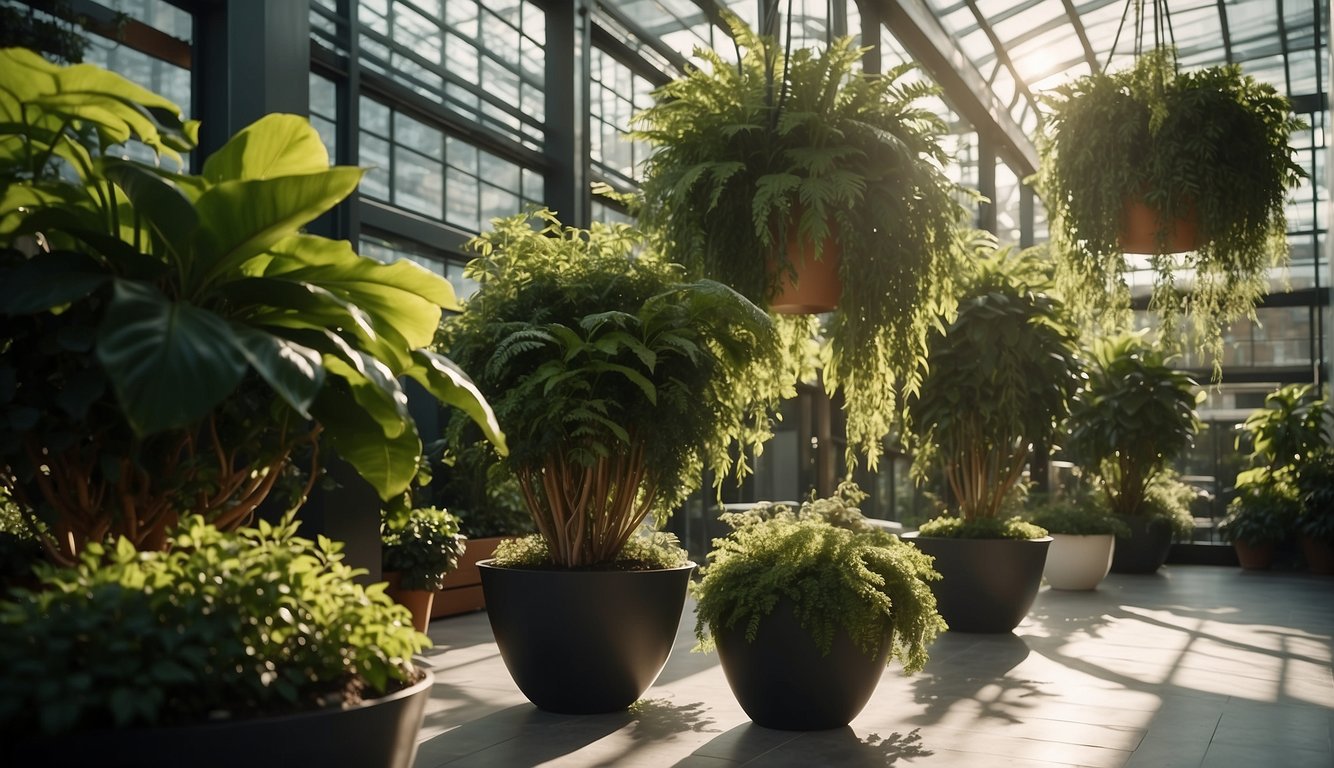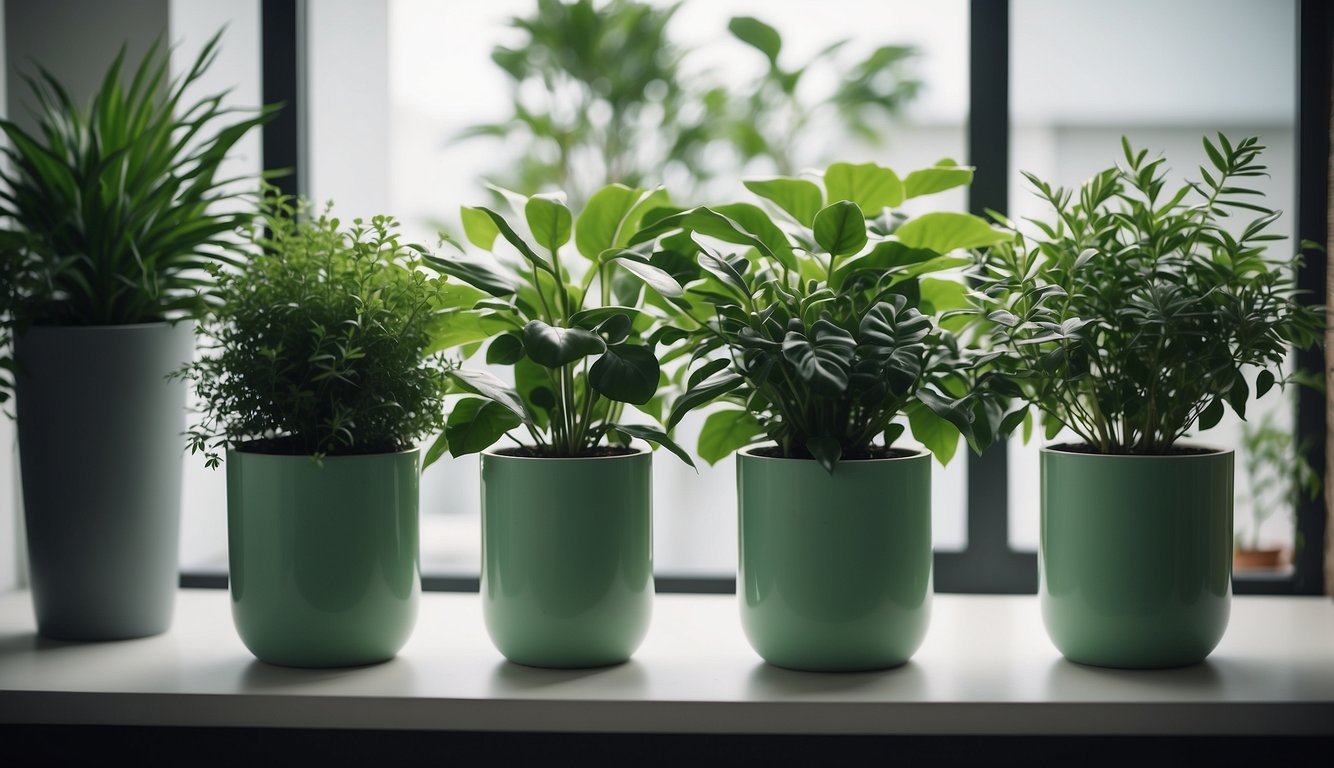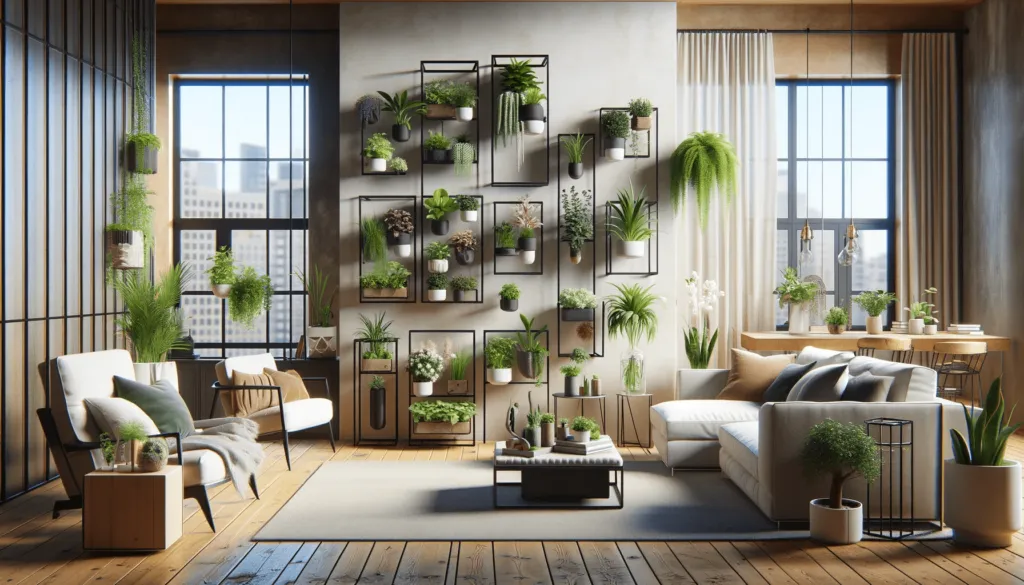Indoor gardening has become increasingly popular in recent years, especially with more people spending time at home. It’s a great way to bring the outdoors inside and create a relaxing, natural environment in your home. With so many different types of plants to choose from, indoor gardening is a fun and creative way to express your personal style and add a touch of green to your living space.

Designing your indoor garden can be both exciting and challenging. There are many factors to consider, such as the amount of light your plants will need, the type of soil they require, and the size of your space. However, with a little planning and creativity, you can create a beautiful and functional indoor garden that will thrive in your home.
Table of Contents
Key Takeaways
- Indoor gardening is a popular way to bring the outdoors inside and create a relaxing, natural environment in your home.
- Designing an indoor garden can be challenging, but with a little planning and creativity, you can create a beautiful and functional space.
- Indoor gardening has many health and wellness benefits, such as improving air quality and reducing stress.
Designing Your Indoor Garden
Designing an indoor garden is a fun and exciting project that can bring life to any living space. There are a few things to consider when designing your indoor garden, such as choosing the right plants, layout and aesthetics, and incorporating biophilic elements.
Choosing the Right Plants
When choosing plants for your indoor garden, it’s important to consider the lighting and temperature of your space. Some plants require more sunlight than others, while some thrive in cooler temperatures. Additionally, consider the size of your plants and how they will fit into your space. If you have limited space, consider using hanging plants or a living wall to maximize your greenery.
Layout and Aesthetics
The layout and aesthetics of your indoor garden are important for creating a cohesive and visually appealing space. Consider using a variety of plant types and sizes to create depth and texture in your garden. Additionally, use decorative pots and planters to add a pop of color and style to your space.
Incorporating Biophilic Elements
Incorporating biophilic elements, such as natural materials and textures, into your indoor garden can create a calming and relaxing environment. Consider using materials such as wood, stone, and natural fibers in your planters and decor. Additionally, consider incorporating water features or natural scents to enhance the biophilic experience.
Overall, designing an indoor garden is a great way to bring life and style to your living space. By choosing the right plants, creating a visually appealing layout, and incorporating biophilic elements, you can create a beautiful and calming indoor oasis.
Essentials of Plant Care
When it comes to indoor garden design, plant care is a crucial aspect that must not be overlooked. Proper care and maintenance of indoor plants can help them thrive and add to the aesthetic appeal of your living space. In this section, we will discuss the essentials of plant care, including watering and humidity, soil and fertilization, and light requirements and placement.
Watering and Humidity
Watering is an essential aspect of plant care, and it is important to ensure that you water your plants correctly. Overwatering can lead to root rot, while underwatering can cause your plants to wilt and die. The amount of water your plants need will depend on the type of plant and its size. As a general rule, it is best to water your plants when the top inch of soil feels dry to the touch.
Humidity is also important for indoor plants, and it can be challenging to maintain the right level of humidity in your home. Most indoor plants prefer a humidity level of around 40-60%. You can increase humidity levels by misting your plants regularly or placing a humidifier near them.
Soil and Fertilization
The type of soil you use for your indoor plants is important, as it can affect their growth and health. It is best to use a high-quality potting mix that is well-draining and rich in nutrients. Fertilization is also important, as it provides your plants with the necessary nutrients for growth. You can use a slow-release fertilizer or a liquid fertilizer, depending on your preference.
Light Requirements and Placement
Light is essential for plant growth, and it is important to ensure that your indoor plants receive the right amount of light. Most indoor plants prefer bright, indirect light, while some plants prefer low light conditions. It is important to research the light requirements of your specific plants and place them in an appropriate location in your home.
In summary, proper care and maintenance of indoor plants are crucial for their growth and health. By following the essentials of plant care, including watering and humidity, soil and fertilization, and light requirements and placement, you can ensure that your indoor garden thrives and adds to the aesthetic appeal of your living space.
Creative Plant Arrangements
When it comes to indoor garden design, creativity is key. Combining different plants with unique containers and arranging them in interesting ways can make your indoor garden a true work of art. Here are some ideas for creative plant arrangements to inspire your next project.
Using Pots and Planters
Pots and planters are a classic way to display your indoor plants. But don’t settle for plain terra cotta or plastic containers. Try mixing and matching different sizes, shapes, and colors to create a dynamic display. You can even repurpose everyday items like teapots, mason jars, or old boots as planters for a quirky touch.
Shelves and Hanging Solutions
If you’re short on floor space, shelves and hanging solutions are a great way to add greenery to your home without taking up valuable real estate. Wall-mounted shelves can be used to create a vertical garden, while hanging planters can be suspended from the ceiling or mounted on the wall. You can also use macrame plant hangers to add a bohemian touch to your indoor garden.
Unique Container Ideas
For a truly unique indoor garden, think outside the box when it comes to containers. Consider using vintage suitcases, birdcages, or even a bicycle basket as a planter. You can also repurpose household items like colanders, watering cans, or even light bulbs as planters for a one-of-a-kind display.
In summary, there are many ways to get creative with your indoor garden design. By using interesting pots and planters, shelves and hanging solutions, and unique containers, you can create a stunning display that reflects your personal style. Don’t be afraid to experiment and try new things – the possibilities are endless!
Health and Wellness Benefits
As indoor garden design trends continue to grow in popularity, it’s important to understand the health and wellness benefits that come with them. Incorporating plants into your home can have a positive impact on both your physical and mental health, as well as help create a relaxing atmosphere.
One of the most significant health benefits of indoor gardening is the increased oxygen levels in your home. Plants release oxygen during photosynthesis, which can help improve the air quality in your home. This can lead to better respiratory health, reduced headaches, and improved concentration.
In addition to physical health benefits, indoor gardening can also have a positive impact on your mental health. Studies have shown that spending time around greenery can help reduce stress and anxiety, and even improve mood. Incorporating biophilic design elements, such as natural light and water features, can further enhance the calming effects of an indoor garden.
Another benefit of indoor gardening is the opportunity to grow your own herbs and vegetables. This not only provides fresh, organic produce for your meals, but can also be a rewarding and relaxing activity. Gardening has been shown to have therapeutic effects, and can be a great way to unwind after a long day.
Overall, incorporating an indoor garden into your home can have a multitude of health and wellness benefits. From improved air quality to reduced stress and anxiety, the addition of greenery can help create a relaxing and rejuvenating atmosphere in your home.
Conclusion
In conclusion, indoor gardening is a fascinating and rewarding hobby that has gained popularity in recent years. By incorporating the latest trends and innovations, we can create beautiful and sustainable indoor gardens that not only enhance our living spaces but also provide us with fresh produce and improve our well-being.
Through our research, we have learned that vertical gardening is a space-saving technique that involves growing plants on a vertical surface, such as a wall or trellis. This technique is gaining popularity due to its ability to maximize space and create stunning living walls. We have also discovered that smart technology is revolutionizing the way we garden indoors, with automated systems that can monitor and adjust the environment to optimize plant growth.
Furthermore, we have found that sustainable practices such as using LED grow lights and hydroponics are becoming increasingly popular in indoor gardening. LED grow lights are energy-efficient and provide plants with the specific wavelengths of light they need for optimal growth. Hydroponics, on the other hand, eliminates the need for soil and allows for precise control of the growing environment.
In summary, indoor gardening is a dynamic and evolving field that offers a wealth of opportunities for creativity and innovation. By staying up-to-date with the latest trends and incorporating sustainable practices, we can create beautiful and thriving indoor gardens that enrich our lives and the environment.
Frequently Asked Questions

What are the latest trends in creating a simple indoor garden?
Creating a simple indoor garden is a great way to bring some greenery into your home. The latest trends in indoor garden design include using hanging plants, creating a living wall, and incorporating terrariums. These design elements help to maximize space and add visual interest to your indoor garden.
How can I design an indoor garden in a small living space?
Designing an indoor garden in a small living space can be a challenge, but it’s not impossible. One of the best ways to maximize space is to use vertical gardening techniques. You can also use small containers to create a mini garden on a windowsill or tabletop. Another option is to incorporate a hanging garden or a living wall.
What are some creative mini indoor garden ideas?
Creating a mini indoor garden is a great way to add some greenery to your home without taking up too much space. Some creative mini indoor garden ideas include using a teacup or a mason jar as a container for a small plant, creating a mini terrarium, or using a small crate or basket to create a mini garden on a tabletop.
How can I incorporate an indoor garden into my living room?
Incorporating an indoor garden into your living room is a great way to add some natural beauty to your space. One way to do this is to use hanging plants or a living wall to create a focal point in the room. You can also use small containers to create a mini garden on a windowsill or tabletop.
What are the best plants for an indoor winter garden?
When it comes to creating an indoor winter garden, it’s important to choose plants that thrive in low light and cooler temperatures. Some of the best plants for an indoor winter garden include ferns, succulents, and spider plants. You can also consider using herbs like rosemary, thyme, and oregano, which can add some greenery and flavor to your winter meals.
What are the key elements for a successful interior garden?
The key elements for a successful interior garden include choosing the right plants for your space, providing adequate light and water, and using appropriate containers and soil. It’s also important to consider the overall design of your space and how your indoor garden can complement it. By paying attention to these key elements, you can create a beautiful and thriving interior garden.


